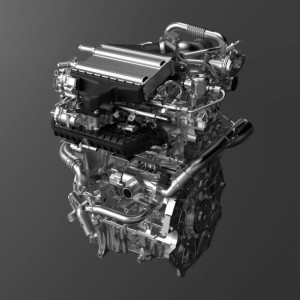Goodbye to 100% electric motors


For years we've seen the electric engine as the only possible path toward a lower-emissions future. But now a new proposal[1] from China completely breaks the mold: an engine that runs on ammonia and promises to cut emissions by up to 90%... without plugs, batteries, or chargers. It was developed by GAC, a state-owned Chinese manufacturer,[2] and it sounds crazy, but maybe it's not. Especially for sectors where electric engines haven't fully caught on, like ships or long road trips. The truth is that electrification is moving forward, yes, but it's not for everyone.
Not every place on the planet has outlets, and not every driver can afford an electric car. And in that gap, right there, is where the ammonia engine might have its chance. GAC already has a prototype: a 2.0-liter, 161-horsepower engine that runs on this chemical compound.
And their message is very clear: sustainable mobility doesn't always have to mean plugging in.
What if electric isn't the end of the road?
We've spent years watching the electric motor become the standard, from Tesla to more affordable hybrids. It sounds good: fewer emissions, good performance, fewer breakdowns. But even that model is starting to show its limits.
What if there are cheaper, faster, or more accessible solutions?
The problem is the plugs
One of the biggest barriers is infrastructure. There are many areas of the world, especially rural zones, remote places, or less developed countries, where charging stations are nowhere to be found. And without a place to plug in, an electric car isn't very useful.
Hybrids, ammonia, and other less explored paths
Plug-in hybrids have been a logical middle step for many.
But they've also opened the door to other alternatives. Not everything has to be gasoline or electricity. Hydrogen and now ammonia are starting to enter the conversation.
An engine that smells like revolution
What GAC has done is unusual, yes, but very interesting.
Using ammonia as fuel in cars is something that hadn't been done until now. But it makes sense: the compound is already used in ships and freight transport, and if done right, it could drastically cut emissions.
Much less pollution
According to the company's own data, using ammonia can reduce carbon emissions by 90% compared to classic fuels. Not bad, especially considering we're talking about a combustion engine that doesn't need batteries.
But there are downsides too
Ammonia is not exactly harmless: it's toxic and has low energy density.
That means it delivers less power than diesel, for example, and it has to be handled with care. So for now, the prototype is still far from perfect.
Could this work in the real world?
We probably won't see ammonia cars everywhere. But that doesn't mean it doesn't make sense.
There are sectors where electric engines don't even come close, and that's where this engine might have a lot to offer.
In ships, for example
The maritime industry is responsible for a good share of global emissions. And electrifying a cargo ship is, right now, science fiction. That's why ammonia, which is already being used in that sector, could be key to reducing environmental impact on long routes.
Innovation is also about daring
Beyond whether the GAC engine reaches the market or not, the important thing is what it represents: thinking outside the usual.
Not everything has to be electric, and sometimes you have to try weird things to move forward. Even if they don't work, they leave useful lessons.
Not everything is written, or plugged in
The electric engine isn't going away, that's clear. But these kinds of inventions remind us that the future of mobility doesn't have to follow a single path.
Decarbonizing the planet is going to require many different solutions, for many different realities. GAC has made a bold move, and maybe their idea isn't the final answer. But what matters is that they've opened a door.
And who knows... maybe the future of transport isn't just in batteries, but also in ammonia.
Stranger things have happened.
References
- ^ But now a new proposal (unionrayo.com)
- ^ It was developed by GAC, a state-owned Chinese manufacturer, (www.gacgroup.com)